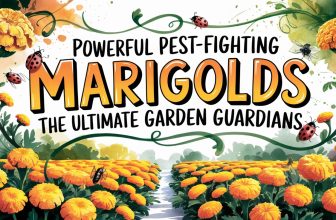Transform Your Garden With Vibrant Purple and Blue Perennials
The use of vibrant purple and blue perennials in garden landscaping can truly elevate the aesthetic appeal and create a visually captivating outdoor space. The dynamic combination of these hues not only extends the blooming season but also attracts pollinators, contributing to a balanced and harmonious environment.
The benefits of incorporating these part shade perennials, alongside companion spring bulbs, are numerous, offering a diverse range of colors and textures. However, successful cultivation and maintenance of these perennials require careful attention to soil, sunlight, watering, and maintenance.
This article delves into the comprehensive insights into the selection, care, and maintenance of vibrant purple and blue perennials, offering valuable guidance to garden enthusiasts aiming to create an enchanting outdoor sanctuary.
Perennial Choices for Vibrant Hues
Selecting perennial choices for vibrant hues in the garden requires careful consideration of colors, textures, and bloom times to create a visually stunning and harmonious landscape throughout the growing season. When designing a color scheme with perennials, incorporating purple and blue perennial combinations can add depth and tranquility to the garden.
Pairing the rich, royal hues of Salvia nemorosa 'May Night' with the delicate blossoms of Geranium 'Rozanne' can create a striking contrast. Adding in the silver veining of Brunnera macrophylla 'Jack Frost' can enhance the overall visual appeal. These choices not only extend the blooming season but also attract pollinators, resulting in a balanced and harmonious garden.
Additionally, pairing these perennials with spring bulbs such as Tulipa 'Purple Prince' and Muscari armeniacum 'Blue Magic' can further enhance the overall aesthetic of the garden.
Benefits of Planting Purple and Blue Perennials
Planting purple and blue perennials in your garden offers numerous benefits, making it a visually appealing and ecologically beneficial choice for gardeners. These vibrant hues not only enhance the aesthetic appeal of the garden but also play a vital role in attracting pollinators such as bees, butterflies, and hummingbirds.
By incorporating purple and blue perennials, gardeners can create a balanced landscape that supports biodiversity and contributes to the overall health of the ecosystem. The rich colors of these perennials add depth and contrast to the garden, ensuring a visually stunning display throughout the blooming season.
Additionally, the presence of these perennials can help in creating a soothing and calming atmosphere, making the garden a tranquil retreat for relaxation and enjoyment.
Popular Part Shade Perennials in Purple and Blue
When designing a part shade garden, incorporating popular perennials in shades of purple and blue can add a captivating and serene ambiance to the landscape. These perennials not only bring vibrant colors but also attract pollinators, creating a thriving ecosystem in your garden. Here are some popular part shade perennials in purple and blue:
| Perennial Selection | Attracting Pollinators |
|---|---|
| Salvia nemorosa 'May Night' | Bees and Butterflies |
| Geranium 'Rozanne' | Bees and Hummingbirds |
| Brunnera macrophylla 'Jack Frost' | Bees and Butterflies |
| Pulmonaria 'Raspberry Splash' | Bees and Butterflies |
These perennials not only provide visual appeal but also contribute to the health and vitality of your garden by supporting pollinators.
Companion Spring-Blooming Bulbs
Complementing purple and blue part shade perennials, companion spring-blooming bulbs add layers of color and texture to the garden landscape.
Companion Bulb Varieties:
- Tulipa 'Purple Prince'
- Muscari armeniacum 'Blue Magic'
- Hyacinthus orientalis 'Blue Jacket'
- Scilla siberica 'Spring Beauty'
Planting Techniques:
- Ensure well-drained soil with organic matter
- Provide adequate sunlight for bulbs to bloom
- Water regularly, especially during dry periods
- Mulch to conserve moisture and suppress weeds
Integrating these companion bulb varieties with purple and blue part shade perennials not only extends the blooming season but also creates a harmonious and visually appealing garden landscape. Following proper planting techniques ensures the successful growth and maintenance of these vibrant additions to the garden.
Tips for Successful Planting and Care
To ensure the successful growth and maintenance of purple and blue part shade perennials with companion spring-blooming bulbs, it is essential to follow proper planting and care techniques.
When it comes to pruning techniques, deadheading spent flowers is crucial to promote continuous blooming and maintain the overall health of the plants.
Additionally, regular monitoring for pests and diseases, such as aphids and powdery mildew, is important for early intervention and prevention.
As for the watering and fertilizing schedule, it is recommended to water the plants regularly, especially during dry periods, and to fertilize them in early spring and mid-summer to support healthy growth.
Furthermore, pruning back foliage after flowering can encourage new growth and help maintain the desired shape and size of the plants.
Maintenance for Perennials and Bulbs
Maintenance for perennials and bulbs involves regular care and attention to ensure their continued health and vitality in the garden. Here are important aspects to consider:
- Seasonal Maintenance Schedule:
- Spring: Deadhead spent flowers and divide and replant perennials.
- Summer: Monitor for common pests and diseases for perennials and bulbs, such as aphids and powdery mildew.
- Early Spring and Mid-Summer: Fertilize perennials.
- After Flowering: Prune back foliage to encourage new growth.
- Common Pests and Diseases for Perennials and Bulbs:
- Aphids
- Powdery Mildew
- Root Rot
- Botrytis Blight
Regularly attending to these maintenance tasks will help ensure the long-term health and vibrancy of your perennials and bulbs.
Troubleshooting for Perennial Care
When tending to perennial care, it is crucial to address any issues that may hinder the health and growth of the plants.
Common perennial pests include aphids and powdery mildew, which can affect the overall vitality of the plants.
To combat these pests, it is essential to employ effective organic pest control methods.
One approach is to introduce beneficial insects like ladybugs or lacewings, which naturally prey on aphids.
Additionally, spraying plants with a mixture of water and mild dish soap can help control aphid infestations.
For powdery mildew, a solution of neem oil or baking soda and water can be applied to affected areas.
Final Thoughts on Garden Transformation
After carefully selecting and tending to the purple and blue part shade perennials, along with companion spring-blooming bulbs, the garden has undergone a striking transformation.
Final Thoughts on Garden Transformation:
- Creating a Cohesive Color Scheme for Your Garden
- Utilize varying shades of purple and blue to create a visually appealing and harmonious color palette.
- Integrate complementary colors to enhance the overall aesthetic of the garden.
- Exploring Different Planting Combinations for a Vibrant Garden Display
- Experiment with different heights and textures to add dimension to the garden.
- Combine perennials with varying bloom times to ensure continuous visual interest throughout the seasons.
Frequently Asked Questions
Can Purple and Blue Part Shade Perennials Be Grown in Containers or Do They Need to Be Planted Directly in the Ground?
Purple and blue part shade perennials can be grown in containers, provided the containers have proper drainage and are large enough to accommodate the plants' root systems. It's essential to use a well-draining potting mix and ensure the containers receive adequate sunlight and water.
Additionally, consider the soil pH requirements of the specific perennials and adjust the soil accordingly if necessary.
Regular monitoring and care are crucial for the successful growth of perennials in containers.
Are There Any Specific Soil Ph Requirements for Purple and Blue Part Shade Perennials and Their Companion Spring-Blooming Bulbs?
Purple and blue part shade perennials and their companion spring-blooming bulbs generally thrive in slightly acidic to neutral soil with pH levels ranging from 6.0 to 7.0. It's crucial to test the soil and adjust pH as needed for optimal growth.
Companion planting these perennials with bulbs can create a balanced ecosystem, as both benefit from similar soil conditions. This strategy enhances the visual appeal and overall health of the garden.
How Can I Prevent Deer and Other Wildlife From Eating My Purple and Blue Part Shade Perennials and Spring Bulbs?
To prevent deer and other wildlife from eating your purple and blue part shade perennials and spring bulbs, consider using wildlife deterrents and plant protection methods.
Some effective deterrents include fencing, repellents, and motion-activated devices.
Additionally, companion planting with species that naturally repel pests can offer protection. For example, planting garlic, chives, or marigolds alongside your perennials can help deter deer and other wildlife.
Regularly monitoring your garden and promptly addressing any signs of wildlife intrusion is also crucial.
Are There Any Specific Pruning Techniques or Timing for Maintaining the Shape and Health of Purple and Blue Part Shade Perennials?
Pruning techniques for maintaining the shape and health of purple and blue part shade perennials are crucial. The timing of pruning depends on the specific plant, but generally, deadheading spent flowers promotes continuous blooming.
Additionally, pruning back foliage after flowering encourages new growth. Proper maintenance ensures the vigor and appearance of the perennials. It is advisable to refer to specific plant guidelines for the best timing and techniques.
Can I Use Organic Fertilizers or Compost to Feed My Purple and Blue Part Shade Perennials and Spring-Blooming Bulbs, or Do I Need to Use Synthetic Fertilizers?
Organic fertilizers and compost can effectively feed your purple and blue part shade perennials and spring-blooming bulbs. They provide essential nutrients, improve soil structure, and promote beneficial microbial activity. Additionally, they contribute to maintaining proper soil pH and are environmentally friendly.
Conclusion
In conclusion, the selection and care of vibrant purple and blue perennials, along with companion spring-blooming bulbs, can significantly transform a garden landscape.
The benefits of these plants extend beyond visual appeal, attracting pollinators and creating a balanced environment.
By understanding the maintenance and troubleshooting techniques for these plants, garden enthusiasts can ensure the continued health and vitality of their outdoor spaces.
Overall, the cultivation of these perennials offers a captivating and dynamic garden aesthetic.
Disclaimer: GardeningNorm is a participant in the Amazon Services LLC Associates Program and may receive a commission if you purchase a product via a link on this page.. However, this does not impact our reviews.Read the full disclosure here.



